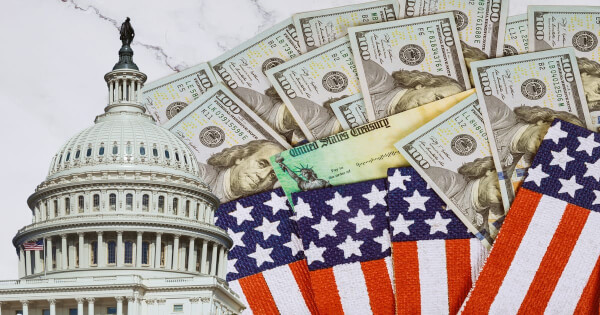US Lawmakers Introduce ‘ECASH Bill’ Aimed at Creating Digital Dollar
Nicholas Otieno Mar 29, 2022 10:00
The bill, dubbed the Electronic Currency and Secure Hardware (ECASH) Act, was introduced on Monday.

A group of U.S. lawmakers announced Monday that they introduced a law bill that calls for developing an electronic version of the U.S. dollar that has the same privacy expectations and legal status as fiat currency.

Supported by serval lawmakers, including Stephen Lynch (D-Mass.), Jesús Chuy Garcia (D-Ill.), Ayanna Pressley (D-Mass.) and Rashida Tlaib (D-Mich.), the bill titled ‘Electronic Currency and Secure Hardware (ECASH) Act,’ would direct the Treasury Department to develop and issue a digital dollar.
The e-cash would be used directly by the general public via widely available hardware devices without the necessary involvement of third-party payment processing or custodial intermediaries. As defined in the draft bill, the electronic dollar would be a bearer instrument that enables people to hold onto their phone or a card. It would be a token-based system, not account-based. If someone were to lose their card or phone in an account-based system, they would lose the funds.
The e-cash would also support peer-to-peer (P2P) transactions and support fully anonymous transactions. Users wouldn't be subject to any more severe know-your-customer rules. They would access the e-cash dollars via a bank account, P2P transaction or a store, and do whatever they liked with it.
Rohan Grey, assistant professor of law at Willamette University, who provided advice on the drafting of the bill, said unlike other digital dollar proposals, the e-cash would not be issued by the U.S. Federal Reserve and therefore would not be a CBDC. He further stated that the e-cash would not involve any form of distributed ledger, blockchain, or other intermediated account.
"We’re proposing to have a genuine cash-like bearer instrument, a token-based system that doesn't have either a centralized ledger or distributed ledger because it had no ledger whatsoever. It uses secured hardware software and it's issued by the Treasury. The e-cash would be purely P2P, capable of offline transactions, and able to be held and used completely anonymously like physical cash is today," Grey elaborated.
Grey added that the system could help serve people who are unable to hold bank accounts because of minimum balance requirements or those who don't trust banks because banks may freeze accounts or charge fees.
The Digital-Dollar Dilemma
The global currency market is facing digital disruption. Consumers across the globe are adopting crypto coins, ushering in a more decentralized era in global finance. Governments are taking notice and are moving to develop central bank digital currencies (CBDCs).
The U.S. is facing a classic “innovator’s dilemma” in which it is expected to respond to an insurgent innovator that threatens its dominant position in leading the adoption of an increasingly digital financial system.
Early this month, The Biden administration began to address this issue by signing a recent executive order that directed U.S. government agencies to prioritize the development of policies to regulate digital assets and examine the feasibility and requirements of launching a digital dollar.
On March 10, President Biden issued an executive order that called for the responsible development of digital assets. It focuses on the development of cryptocurrencies, stablecoin, and CBDC. The executive order embraces digital asset innovation and signalled the end of regulatory uncertainty surrounding such digital assets. The order also encourages a whole government approach and inter-agency coordination in the research and development of a CBDC.
In January, The Federal Reserve released a discussion paper that examined the pros and cons of creating a CBDC for the U.S. The paper invites public comments and says that the Fed will not favour any particular policy outcome. The regulator disclosed that the paper is an initial step in determining whether and how a CBDC could enhance the domestic payments system while keeping it effective and safe. As previously mentioned, the Fed is accepting comments in response to the Paper until May 20, 2022.
Image source: Shutterstock.jpg)
